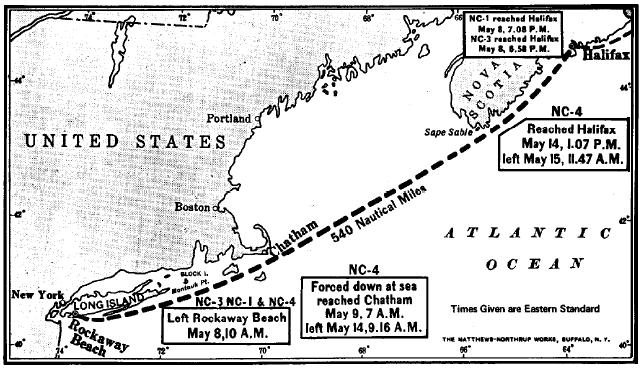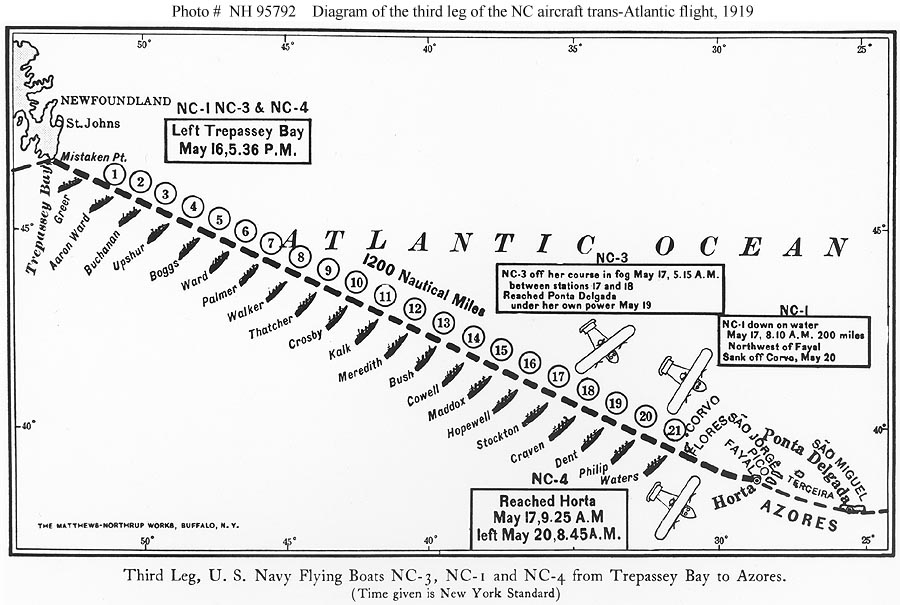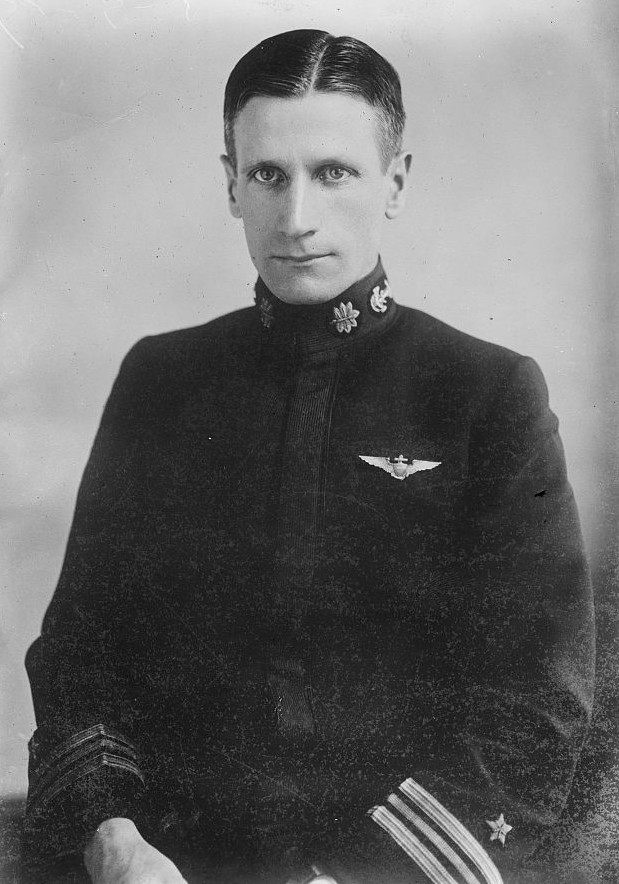« Back to Blog
Crossing Of The Atlantic 1919, Part II
Waring Hills May 17, 2011NC-4 had a rough start to the mission after leaving NAS Rockaway on 08 May. First, she had an oil pressure problem and then broke a connecting rod. NC-4 landed off Cape Cod and taxied to the Chatham Naval Air Station. It took several days to change the engine and wait for good weather. NC-3 and NC-1 had almost departed on 15 May from Trepassey leaving NC-4 behind, but they were delayed by weather. NC-4 caught up with the other two NCs at Trepassey on that day.
On the 16th, it was NC-4 which was airborne first and as dusk approached she sped into the lead. The Navy had planned extensively for this daunting mission of crossing the Atlantic in the days before good weather predictions and instrument flight. Sixty-eight destroyers had been set up as “marker bouys” from Newfoundland to the Azores.
The Navy destroyers were to use smoke during daytime and searchlights at night to help the NCs navigate. Flight over water and navigation of great distances was a new aviation problem, and the intrepid Naval aviators had little experience in navigating great distances at night and bad weather. Hence, the great precautions taken by the Navy with the destroyers stationed in support of the three aircraft. Shortly after sunrise on the 17th, fog banks loomed ahead for the NCs. Only Lieutenant Commander Read was able to complete the flight to the Azores, because he trusted his instruments and kept flying. NC-1 after entering the fog did not have the same confidence in their instruments and chose to land 100 miles west of Flores and take a compass bearing. In the rough water landing, NC-1 was damaged and in the attempt to retrieve her by a Greek steamer, “Ionia,” she capsized and sank. NC-3, likewise, made a rough water landing 45 miles southwest of Flores. Lieutenant Commander Towers was unable to communicate with the destroyers searching for him the west of Flores, so he jury-rigged a sail. Two days later on 19 May, NC-3 sailed backwards into Ponta Delgada.
NC-4 and LCDR Read’s crew had arrived at Horta, Azores, at 9:25 AM on the 17th. Weather prevented launching that day, but he launched on the 18th for Ponta Delgada and upon landing was greeted by ships decked in flags, whistles blowing and the entire populace and governor waiting to congratulate the hardy Navy aviators.
Before the transatlantic attempt was started Read had observed,
If the flight were successful, not only would an immense amount of valuable…information be obtained concerning long-distance oversea flying, but Naval Aviation, the Navy Department and the whole country would receive the plaudits of the entire world for accomplishing a notable feat in the progress of the science; the mass of the people would be made to realize the importance of aviation as a valuable arm of the naval service and the way would be blazed for others to follow and thus act to promote a commercial transatlantic service.
NC-4 would reach Lisbon, Portugal, on 27 May 1919…and so part III will also reach your shore on that date, watch for the 27 May blog posting on “Call The Ball!”
Share:
« Previous Post
Three Naval Aircraft Takeoff To Attempt Crossing Of The Atlantic 1919
Next Post »
Self-Sealing Fuel Tanks 1917!



